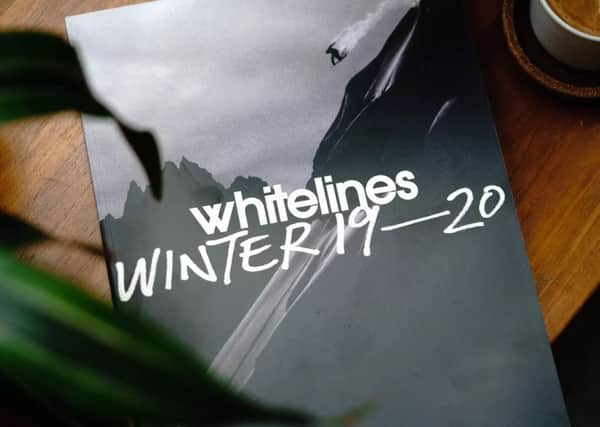How snowboard mags survived the print-pocalypse


Over the last few years, however, the number of snowboard mags available in print format has gone downhill faster than Xavier De Le Rue straight-lining 55-degree ice. In 2015, UK-based Whitelines went online only, US title Snowboard followed suit in 2018 and in March of this year, American Media Inc closed the once-mighty Transworld Snowboarding, something that would have been unthinkable only a few years before.
Recently, then, if you’ve wanted to get your hands on a physical snowboard mag, your options have become increasingly limited; these days, if you manage to bag a single title on the pre-flight trip to the airport newsagents, you’re doing OK.
Advertisement
Hide AdAdvertisement
Hide AdIn 2015, when the presses fell silent at Whitelines, its editor Ed Blomfield explained in a note on the website that the switch to digital was “just about staying true to that original goal of stoking out the readers; if you guys are here online, then that’s where we need to be”. And that very much appeared to be that – right up until last month, that is, when Whitelines suddenly published an article on its website, announcing that it would be returning to the newsstands in physical form.
“The inaugural Whitelines Winter Annual is here,” it began. “After 20 years in print, followed by a four-year hiatus, Whitelines is returning to the shelves with a deep dive into snowboarding culture in 2019.”
The differences between the last edition of Whitelines and this new one – as outlined by Blomfield in a quote on the Whitelines site – are telling. Describing Issue 121 as “the mag I always wanted to make” he explains that it will have “more pages, higher quality paper, less advertising”. Bottom line: if there’s still a market for print snowboard mags in 2019, they need to do all the things online snowboard mags can’t do: they need to look good, they need to feel good, and they need to have – as far as economically possible – a high ratio of editorial killer to advertising filler. If print is now all about the experience, in other words, then these magazines need to offer readers the time of their lives. It’s perhaps no coincidence that two of the snowboard mags that have managed to retain a print edition through the turmoil of the digital revolution have done so by following this formula, albeit in different ways.
When it first started appearing in snowboard shops in 2009, Reason, edited by Ian Sansom, was a breath of fresh air. Yes, its “Free (Not Cheap)” distribution model meant that, to begin with at least, it carried a significant number of ads, but as the seasons rolled by and paid-for mail-order subscriptions (presumably) went up, the ratio of editorial to advertising noticeably increased. More significant, however, was the look and feel of the thing: perfect-bound, printed on thick, luxurious paper and with a stylish, minimalist design aesthetic, it looked like the catalogue for a high-end art exhibition and stood out a mile alongside much of the competition. It’s no surprise that early issues are completely sold out on the Reason website; these days I keep my copy of Issue #1 in a Very Safe Place.
And then there’s Method magazine – lovingly referred to as “the cockroach of snowboarding” by former staffers because it’s cheated death so many times in its 25-year history. Having started life as a website in 1994, when pro snowboarder Anders Hagman and snowboard photographer Calle Eriksson launched it from their apartment in Sweden, Method went on to become a punky, 3D-comin-atcha print product with maximalist, in-yer-face design to match. Flicking through its pages is the visual equivalent of being slapped repeatedly in the face while listening to death metal, but there are plenty of people out there prepared to pay good money for that, and Method has survived the print-pocalypse, at least in part, by remaining true to its gonzo roots. In a new book Hold Fast, Tweak Hard, due out later this month, former editor-in-chief Michael Goodwin sets out to tell the story of its unlikely survival, which apparently involved “working for magic mushrooms, squatting in abandoned properties and a stint in solitary confinement” among other things. Anyone interested in the future of printed snowboard media (or, indeed, how to “fashion impromptu dark rooms in hotel bathrooms”) should run out and buy a copy.